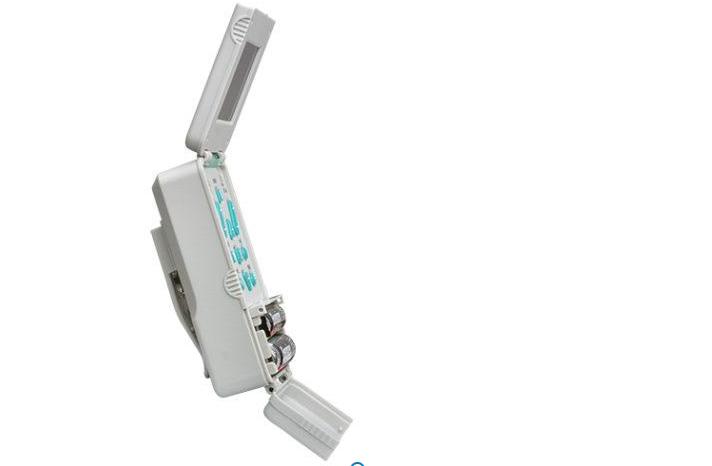Anavex Paves New Path for Alzheimer’s Treatment with Blarcamesine
Anavex Life Sciences, a publicly traded biopharmaceutical company, is advancing the field of neurodegenerative disease treatments, particularly Alzheimer’s disease, through its innovative drug candidate, blarcamesine (ANAVEX®2-73). With a focus on restoring cellular homeostasis via SIGMAR1 receptor activation, blarcamesine has demonstrated potential in slowing disease progression, offering hope for patients in the early stages of Alzheimer’s disease (AD). The findings of the pivotal clinical trial, ANAVEX2-73-AD-004 highlights the growing body of evidence supporting Anavex Life Sciences’ work.
The ANAVEX2-73-AD-004 Phase IIB/III Trial: Key Findings
Alzheimer’s disease, a progressive neurodegenerative disorder, lacks approved oral disease-modifying treatments, making the results of Anavex’s latest trial particularly noteworthy for once daily oral dementia treatment. The Phase IIB/III trial, ANAVEX2-73-AD-004, was a multicenter, randomized, double-blind, placebo-controlled study conducted across 52 medical research centers in five countries. This 48-week trial assessed the efficacy and safety of blarcamesine in 508 participants diagnosed with early-stage Alzheimer’s disease (Stage 3). Participants were divided into three groups: a medium dose of 30 mg, a high dose of 50 mg, and a placebo group. The primary outcomes were changes in cognitive and functional measures as assessed by the ADAS-Cog13 and ADCS-ADL scales.
The trial yielded noteworthy results, demonstrating that blarcamesine significantly slowed clinical progression by 36.3% compared to the placebo group. Patients treated with blarcamesine showed a notable improvement in the prespecified cognitive endpoint (ADAS-Cog13), with a mean difference of -2.027 (P=0.008), and functional endpoint (CDR-SB), with a mean difference of -0.483 (P=0.010). These findings suggest that blarcamesine offers a new avenue for treating Alzheimer’s by targeting the root causes of the disease rather than simply addressing symptoms.
Biomarker and Safety Profile
In addition to clinical outcomes, the trial investigated secondary endpoints such as biomarkers from the A/T/N spectrum, including plasma Aβ42/40 ratios and global brain volume changes. Blarcamesine not only increased the Aβ42/40 ratio (P=0.048), but it also significantly reduced whole brain volume loss (P=0.002), indicating a potential to slow the underlying neurodegenerative processes associated with Alzheimer’s disease. The observed biomarker improvements add a compelling dimension to the drug’s efficacy and underline the promise of SIGMAR1 activation as a therapeutic target.
Safety, an essential consideration in any therapeutic development, was well-characterized in the ANAVEX2-73-AD-004 trial. Blarcamesine exhibited a favorable safety profile with no neuroimaging-related adverse events. However, treatment-emergent adverse events (TEAEs) were observed in 16.7% of the blarcamesine group compared to 10.1% in the placebo group. Dizziness was the most commonly reported side effect, though it was generally mild to moderate in severity.
Potential Implications for Alzheimer’s Treatment
The success of the ANAVEX2-73-AD-004 trial has profound implications for the future of Alzheimer’s disease treatment. Blarcamesine stands out not only for its novel mechanism of action but also for its potential to complement or provide an alternative to existing anti-beta-amyloid therapies. By enhancing autophagy and restoring cellular balance through SIGMAR1 activation, blarcamesine may represent a disease-modifying therapy that could be administered orally, providing a more accessible treatment option for patients.
Anavex Life Sciences continues to push forward with additional studies and extensions of its clinical trials, aiming to further substantiate the benefits of blarcamesine. The open-label extension study ATTENTION-AD, which concluded in June 2024, seeks to evaluate the long-term effects of this therapeutic approach. If successful, blarcamesine could transform the therapeutic landscape for Alzheimer’s, providing a much-needed option for early-stage patients.
Broader Impact on Neurological Diseases
Anavex is not limited to Alzheimer’s disease. The company’s research spans a range of neurodegenerative, neurodevelopmental, and neuropsychiatric disorders, including Parkinson’s disease, Rett syndrome, and schizophrenia. The versatile action of blarcamesine on SIGMAR1 and muscarinic receptors has prompted research into its potential application in these diseases, where similar mechanisms of cellular dysregulation are at play. In fact, the Michael J. Fox Foundation awarded Anavex a research grant to further investigate blarcamesine’s use in treating Parkinson’s disease.
With additional drug candidates like ANAVEX®3-71 in the pipeline, Anavex Life Sciences is positioned to address some of the most challenging diseases affecting the central nervous system (CNS). Preclinical data suggest that ANAVEX®3-71 may target mitochondrial dysfunction and neuroinflammation, both of which are critical factors in Alzheimer’s disease and other neurodegenerative disorders.
Anavex Life Sciences continues to make significant strides in the development of treatments for neurodegenerative diseases, with blarcamesine leading the way. The results of the ANAVEX2-73-AD-004 Phase IIB/III trial underscore the potential of this innovative therapeutic to slow cognitive and functional decline in Alzheimer’s patients. By restoring cellular homeostasis through SIGMAR1 activation, blarcamesine represents a promising option for early-stage Alzheimer’s disease, marking a pivotal moment in the search for disease-modifying treatments. As additional studies progress, the future of blarcamesine and other Anavex candidates may reshape how we approach the treatment of CNS disorders.
Keep an eye for more news & updates on BuzzReleased!





